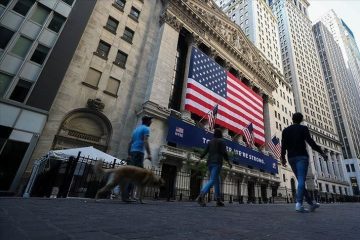The rise and rise of private capital

THE BIGGEST event on Wall Street in 1956 was the IPO of a company that had stayed private for more than half a century. Investors queued to secure shares in the Ford Motor Company. Their price jumped $ 5 on the first day’s trading. Yet by the time the company listed, it had no real need for capital. Henry Ford, its founder, had long been hostile to the idea of going public. It was almost a decade after his death in 1947 when the family foundation at last decided to sell some of its Ford shares to the public.
This year’s wave of high-profile flotations has some similarities. Uber, Lyft, Slack and the rest are not old as Ford was when it listed. But nor are they in the first flush of youth. New firms are staying private for longer. The number of public firms in America has declined by more than a third since the 1990s.
One explanation is that today’s tech firms have less need of public capital. More of the value of startups is tied up in ideas than in fixed assets such as factories. Tech moguls like the opportunities a public listing brings. But, like Henry Ford, they are less keen on the loss of control—and the scrutiny (business secrecy matters a great deal for ideas-led firms). Yet the crucial shift has been not a fall in demand for capital, but a rise in its supply. Sums that could once be raised only on public markets can now be readily tapped from private sources.To grasp the rise of private capital, go back to Ford’s day, when finance was simpler. Private capital was a bank loan, a contract between a borrower and lender, or a grubstake raised from family members, friends or business associates. If larger sums were needed a firm might issue securities in the public markets—equity shares or (for the well-established) high-grade bonds.
Around the time that Ford Motors went public, venture-capital firms emerged to provide seed capital to startups. Later on, in the 1980s, Drexel Burnham Lambert, an upstart investment bank, had the idea of issuing low-grade “junk” bonds to buy public companies (so called “leveraged buy-outs”, or LBOs).
Today’s big private-equity firms, such as KKR and Blackstone, cut their teeth during the buy-out boom of the 1980s. Rival firms, such as Apollo and Ares, were founded by Drexel alumni. Changes to capital-markets regulation in the 1990s and 2000s set the scene for the recent growth of private markets. The pooling of private capital was made easier. Listing on public markets was made harder.fs
Deeper forces were at work, too, which strengthened after the financial crisis. The secular decline in long-term interest rates, caused in part by abundant savings, was given an extra push by the easy-money policies of central banks. Yields on stocks and corporate bonds also declined. The venturesome looked to private markets for higher returns. By their nature, such markets are illiquid and more lightly regulated. The intrepid hope to be rewarded for tying up their money for longer and for doing their homework.
A gap in the supply of credit was left by capital-constrained banks. One manifestation is the popularity of leveraged loans—bond-like securities sold to syndicates of private investors. Easier than bank finance, and more flexible than junk bonds, they are the preferred fuel for LBOs. Other forms of private credit look a lot like bank credit. A syndicate may consist of just a handful of lenders. The loan is tailored. It might be for an office building, or to buy breathing space for a company to get back on track.
The growing supply of private forms of equity capital is even more remarkable. Young tech firms are almost spoilt for choice. Sovereign-wealth funds, family offices and even staid old pension funds now compete for stakes in newish, unlisted firms. Private-equity firms have $ 2.4trn waiting to be put to work, according to Preqin, a data-provider. A scarcity of buy-out targets means funds are increasingly reluctant to let go of good firms. The lifespan of some funds is being extended beyond ten years.
Even Henry Ford would applaud such patient capital. It is now received wisdom that ideas-rich firms are better suited to private capital than to public markets, with their endless disclosures and distracting spotlight. But that wisdom tends to play down the supply-side of capital markets. In fact “public markets are not inherently antithetical to tech,” says Ajay Royan of Mithril, a venture-capital firm based in Austin, Texas. Steve Jobs did fine in them. So did Bill Gates. What Silicon Valley takes today as a lasting norm might simply be the outgrowth of unusually low interest rates.




